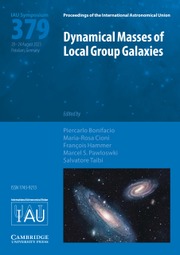No CrossRef data available.
Article contents
Acceleration of hybrid MPI parallel NBODY6++ for large N-body globular cluster simulations
Published online by Cambridge University Press: 07 March 2016
Abstract
Previous research on globular clusters (GCs) dynamics is mostly based on semi-analytic, Fokker-Planck, Monte-Carlo methods and on direct N-body (NB) simulations. These works have great advantages but also limits since GCs are massive and compact and close encounters and binaries play very important roles in their dynamics. The former three methods make approximations and assumptions, while expensive computing time and number of stars limit the latter method. The current largest direct NB simulation has ~ 500k stars (Heggie 2014). Here, we accelerate the direct NB code NBODY6++ (which extends NBODY6 to supercomputers by using MPI) with new parallel computing technologies (GPU, OpenMP + SSE/AVX). Our aim is to handle large N (up to 106) direct NB simulations to obtain better understanding of the dynamical evolution of GCs.
- Type
- Contributed Papers
- Information
- Proceedings of the International Astronomical Union , Volume 10 , Issue S312: Star Clusters and Black Holes in Galaxies across Cosmic Time , August 2014 , pp. 260 - 261
- Copyright
- Copyright © International Astronomical Union 2016


